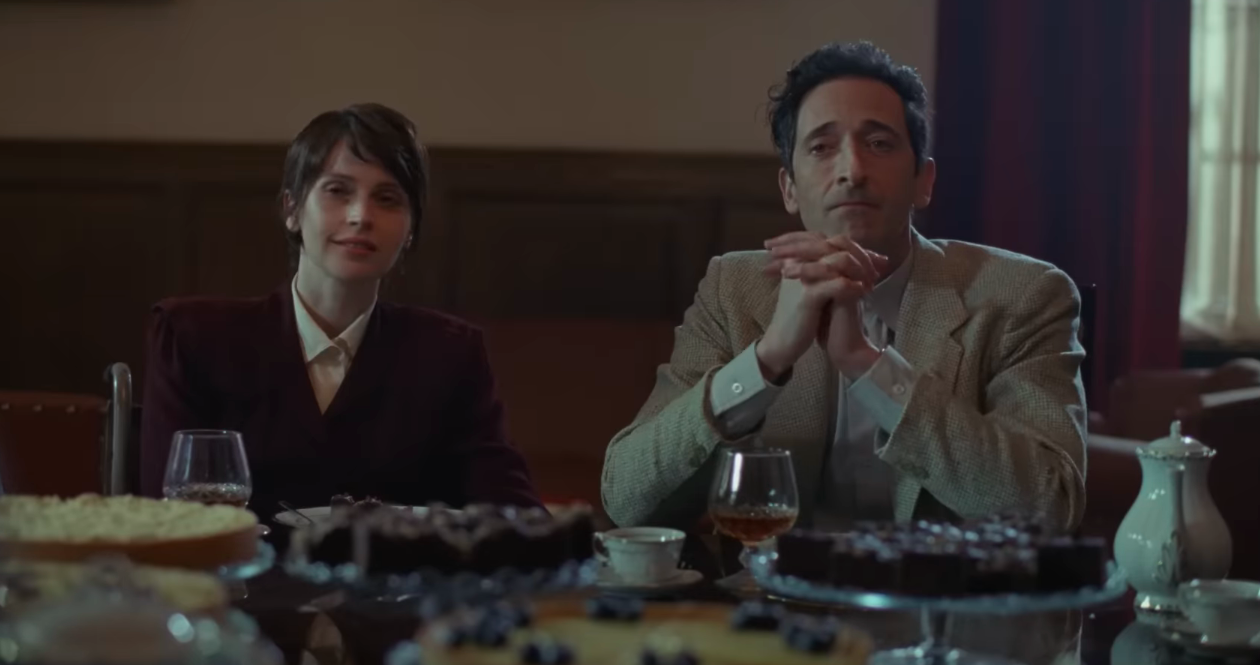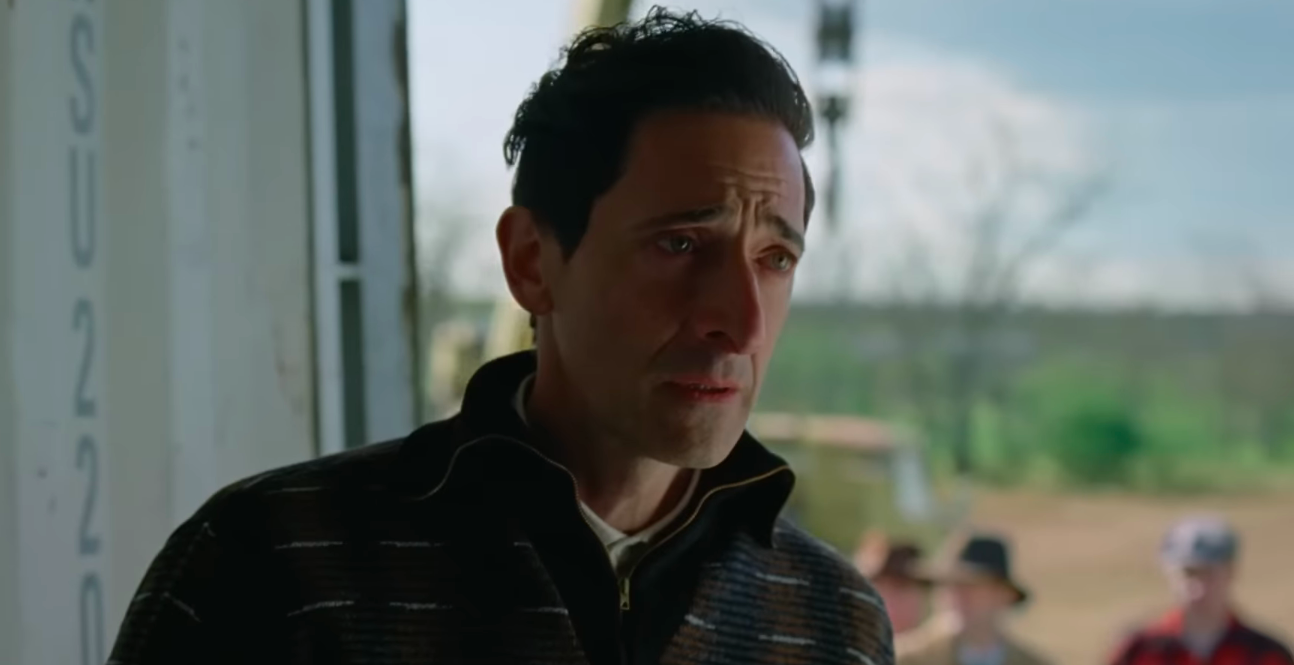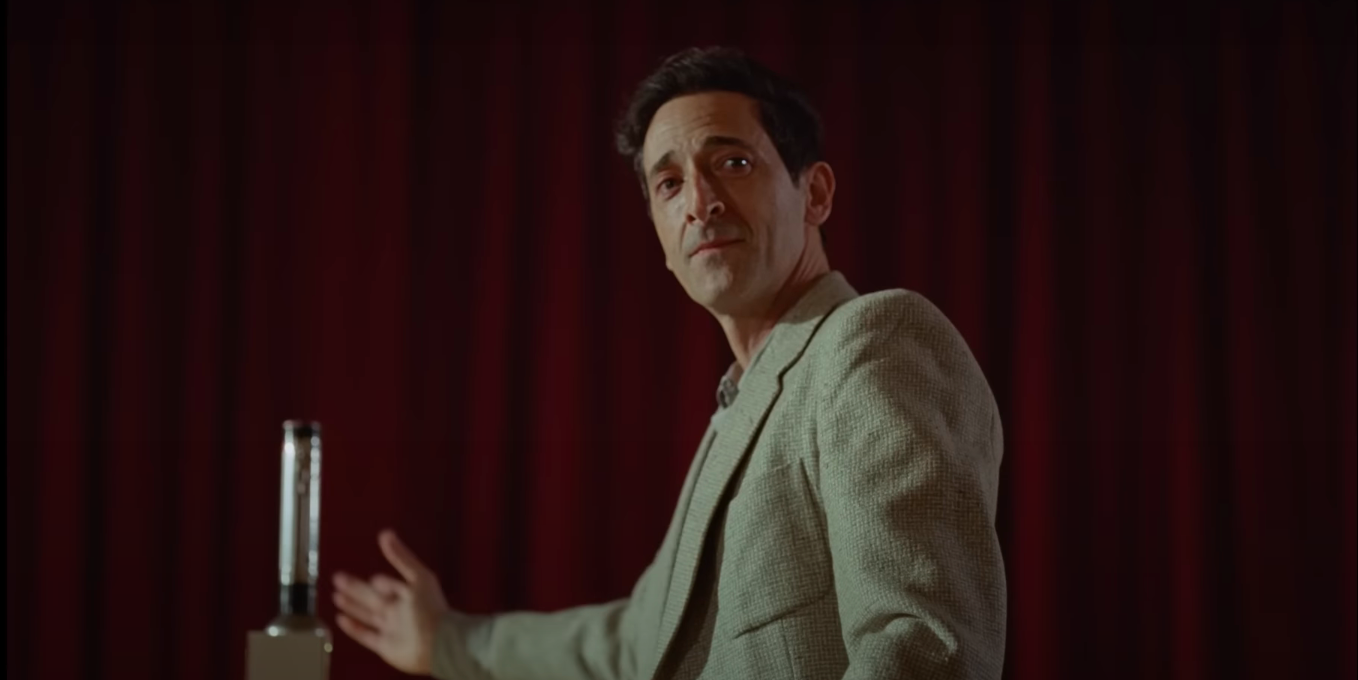Brady Corbet’s ‘The Brutalist’ stars Adrien Brody as László Tóth, a Jewish architect from Hungary who comes to America in 1947 after surviving the horrors of the Holocaust. It is a chance for him to rebuild his life in this new country that is full of possibilities. However, the idea of the American dream soon starts to chip off when reality strikes. Brody plays the character with a heartbreaking emotional depth, which makes László come across as a highly relatable and sympathetic character. It is reminiscent of his Oscar-winning performance in ‘The Pianist,’ which is based on a true story. His character in ‘The Brutalist,’ however, does not exist in the realm of reality.
The Fictional László Tóth was Born from the Confluence of Post-war Trauma and Architecture
‘The Brutalist’ is a fictional story about a fictional architect written by Brady Corbet and Mona Fastvold, the idea for which started as a discussion about architecture. The filmmakers, who are also married to one another, wanted to make a film about something that would explore postwar trauma through the lens of architecture, particularly Brutalism. Corbet was majorly influenced by two books: ‘Marcel Breuer and A Committee of Twelve Plan a Church’ focusing on the major Brutalist architect Marcel Breuer, and ‘Architecture in Uniform’ by Jean-Louis Cohen. The first book familiarised the writer-director with the challenges faced by Breuer, particularly the antisemitism, while Cohen’s book showed him the ways in which trauma can take shape in architecture.

Once the idea was set in their minds, the writers focused on the character, whom they did not necessarily want to base on a real person. Instead of bothering themselves with getting the details of someone else’s life, they wanted to explore the uninhibited space provided by fiction to build a character that could allow them to approach varied themes and emotions in a single story. When they started with the basics of what would eventually become László Tóth, they gravitated toward the story of an individual with a Central European Jewish immigrant background, mainly because they saw Bauhaus as one of the cornerstones of his life story.
In their construction, they had a lot to draw from their own family members, with Corbet’s uncle and Fastvold’s grandfather being architects. However, they tried not to lean too much in their direction. Instead, they reflected upon their own experiences as artists to inform László’s journey. As artists and filmmakers, the couple is intimately aware of the experience of offering their own art to people who can finance the project. This patron-artist dynamic became the focal point of László’s journey with Harrison Lee Van Buren, playing the patron for the architect. Through them, the filmmakers wanted to explore the nature of this relationship that can often easily turn into the exploitation of the artist by someone with the power of money over them. While their journey was never as painful as László’s, they did imbue him with the realism of their own harsh reality as filmmakers.
Adrien Brody Found a Personal Connection to László Tóth
When the script of ‘The Brutalist’ was put on Adrien Brody’s desk, he didn’t have to think too much about accepting the role. The actor immediately related to the character due to his immigrant experience. More importantly, however, he could find parallels between the fictional character and his mother, photographer Sylvia Plachy, a Hungarian immigrant who came to the US in the aftermath of the Hungarian Revolution of 1956. In László’s desire to start anew and find his art and soul again, Brody saw his mother’s experiences as a young immigrant who is still processing the trauma of having left her home while also looking towards a future.

Due to the deep knowledge of his mother and his grandparents’ past, the actor found a sense of relatability to the character, especially when it comes to processing one’s trauma and reflecting it in their art. Apart from this, Brody could also connect with László as an artist. He could see in the protagonist the desire to build something that lasts, especially after he leaves his homeland, where his buildings are the only reminders of his existence. In his journey as an actor, Brody, too, gravitates towards roles that resonate with people and have a lasting impact on the viewer. He wants his performances to feel significant, which is why he could relate to László’s desire to create something that lasts. This allowed him to see László as a real person with real struggles, even if he remains entirely made-up.
Read More: Is Guy Pearce’s Harrison Lee Van Buren Based on a Real Industrialist?


